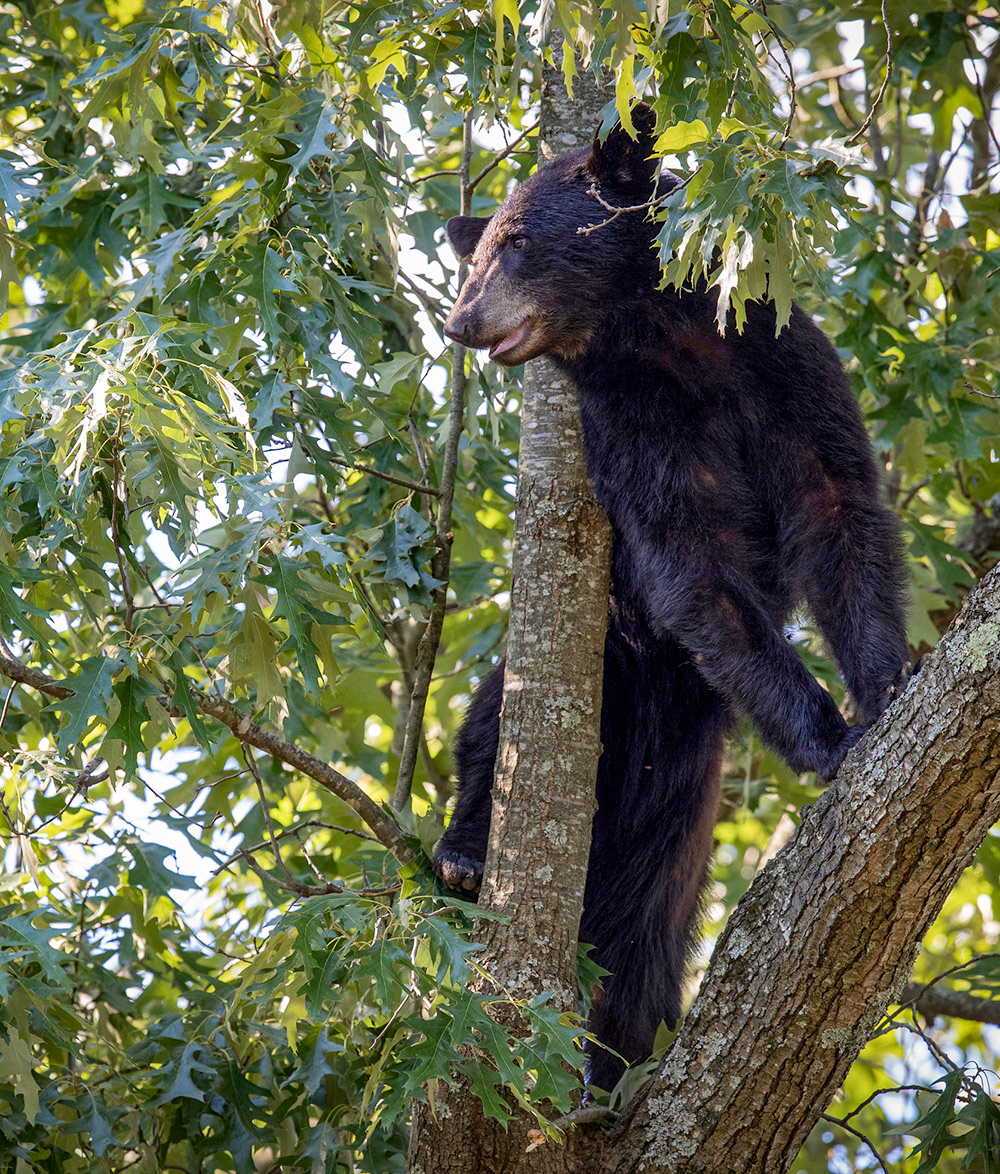UAM NEWS
Experts Warn Arkansans To Be “Bear Aware” as Populations Rise Across the State

With Arkansas’ black bear population continuing to grow and sightings becoming more common, wildlife experts are urging Arkansans to stay informed about bear behavior and safety practices in the outdoors.
Dr. Don White, wildlife biologist and bear expert in the College of Forestry, Agriculture, and Natural Resources at the University of Arkansas at Monticello, says education is the best defense against bear encounters.
“Being informed about bear habits and keeping human foods away from bears are two of the most important things you can do to protect yourself and others in bear country,” said White. “A bear that loses its natural fear of humans is a potentially dangerous bear.”
Staying Safe in Bear Country
When camping, hunting or hiking in wooded areas, White advises Arkansans to take simple precautions. Campers should always keep their campsite clean and store food in vehicles. Food should never be stored inside a tent.
Trash and leftover food should be burned when possible or hung from a tree alongside food supplies. Since bears have a keen sense of smell, leftover food that is tossed in the woods or buried will often attract bears.
Hunters can help avoid bear encounters by properly hanging feeders. Feeders should be suspended at least 8 feet off the ground and 8 feet away from the tree trunk. Using a pulley system between two trees is an effective way to keep bears from reaching them.
White also warns Arkansans never to feed bears or leave pet food or garbage where bears can access it. Bears that feed on human food quickly lose their natural fear of people, which can lead to dangerous bear-human encounters.
Bear Encounters are Rare, but Awareness is Key
Despite an estimated 5,000 black bears in Arkansas, White emphasizes that human-bear conflicts are exceedingly rare. He explains that black bears cause fewer than one human death per year across all North America.
Most bears are shy and avoid people, but during late summer, when natural food sources are limited, bears may wander closer to human areas in search of food.
White also notes that warmer summers and increased droughts could lead to more bear sightings. As drought reduces the availability of natural foods, bears may be forced to roam farther in search of food.
It’s important for Arkansans to understand that coexistence with bears depends on respect and responsibility.
“Most conflicts can be avoided by keeping bears wild,” said White. “Don’t feed them, don’t approach them, and keep your area clean. We want bears to stay afraid of us — that’s what keeps both people and bears safe.”
Encountering a Bear
Though black bears rarely attack humans, understanding how to respond to an encounter is crucial. White advises anyone who sees a bear to remain calm and stand their ground rather than running away or climbing a tree. Bears can run at speeds of up to 30 miles per hour and are exceptional climbers.
Making noise by shouting or banging objects can often frighten the bear away. People should back away slowly, avoid direct eye contact and never approach a bear, especially a mother with cubs.
Females are highly protective of their cubs, while 2-year-old males, no longer accompanying their mothers, are more likely to cause trouble as they learn to forage on their own.
“A bear that shows little fear of humans can be a dangerous bear,” said White. “If you encounter an aggressive bear, notify local wildlife law enforcement officers, right away.”
Reports of nuisance bears can be sent to the Arkansas Game and Fish Commission/United States Department of Agriculture Animal and Plant Health Inspection Service Wildlife Services nuisance wildlife hotline, 833-345-0315, from 8 a.m.-4:30 p.m. Voicemails will be returned during normal working hours. If you encounter a life-threatening situation, call the AGFC’s radio room (833-356-0824), which is answered 24 hours a day.
Bear Facts: Understanding Arkansas Black Bears
Black bears in Arkansas are most often found in acorn-producing hardwood forests during the fall and in mixed hardwood areas with grasses in spring. They den from November through April in rock crevices, root wads, blowdowns, pine thickets and brush piles.
According to Spencer Daniels, large carnivore program coordinator for the AGFC, denning for bears in Arkansas is very different from their relatives that den in colder climates. Since winters in Arkansas are relatively mild compared to more northern climates, natural foods are available later into the year and bears can forage for longer periods. Because of this, bears in Arkansas den for shorter periods of time and often in response to reproductive needs, such as mothers having cubs. Expecting mothers will den for four months or so with their newborns.
Bears are solitary by nature. Mating pairs will stay together for two to three days but will not likely consort with one another at any other time of year. Cubs are born about the size and weight of a can of soda, with their eyes closed and typically remain with their mother until the spring following her next denning season before venturing off on their own. Female bears will usually stay within their mothers home range, which is approximately 20 to 30 square miles. Male bears will venture further to establish their own home ranges. Their ranges can be as large as 100 square miles.
Biologists throughout the Southeast have worked together to develop the website www.bearwise.org to help people learn more about bears and how to live in areas where bears may be present.
“Since the development of Bearwise.org, nearly every state in the U.S. has joined the effort to help people coexist with bears in their areas,” Daniels said.